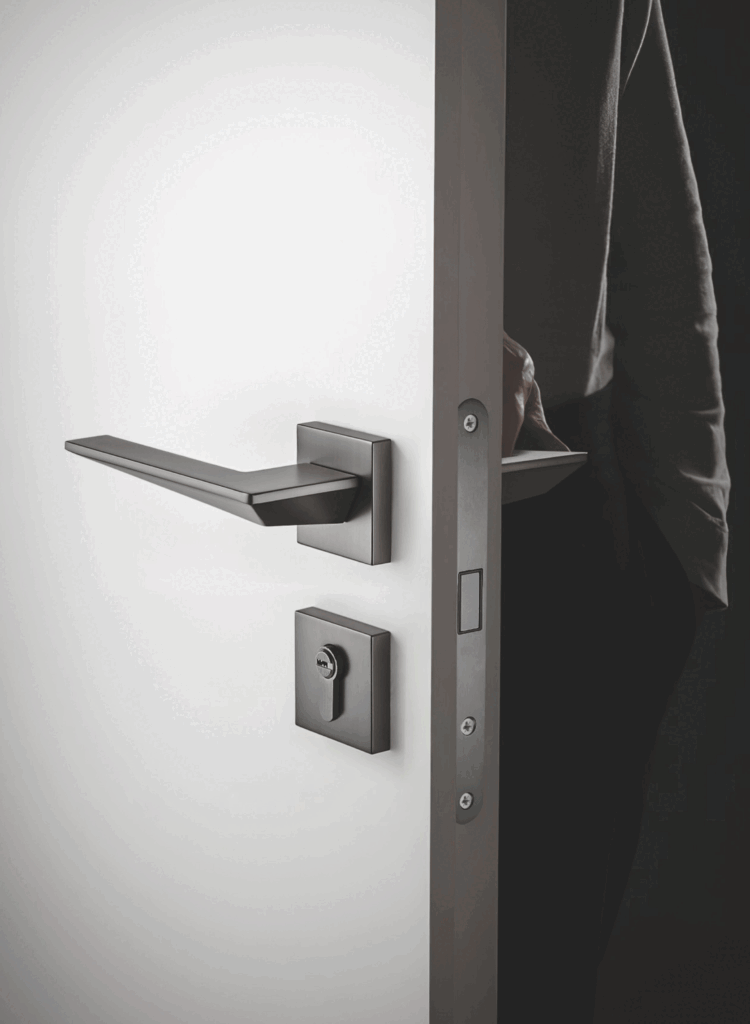Door closers are essential for controlled and automatic door closing, adding both security and convenience to various environments. Selecting the right door closer involves several factors, including the model selection, door usage frequency, door closer grade, and installation options. This article will guide you through each of these aspects to help you choose the right door closer for your needs.
1. Model Selection
The correct door closer model largely depends on the door’s weight and width. These two factors directly impact the door closer’s suitability and lifespan.
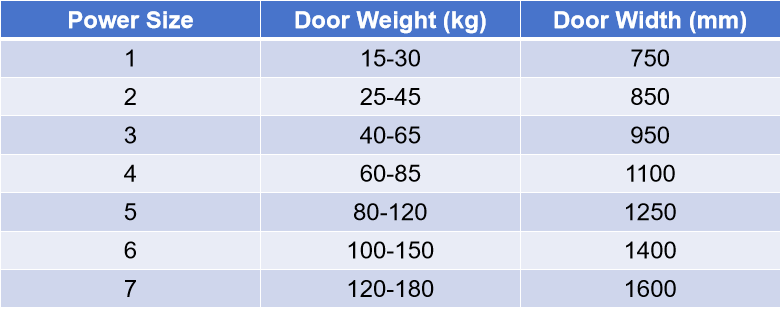
- Door Weight: Each door closer model is designed to handle a specific weight range. Selecting a closer that aligns with the door’s weight is crucial for smooth operation and durability. A closer used on a door that is too heavy or too light may lead to malfunction, improper closing speed, or premature wear. Make sure to check the weight compatibility of the closer for optimal performance.
- Door Width: The door width also influences the required closing torque. Wider doors generally need higher torque to close securely. Choosing a closer that matches the door’s width ensures consistent, stable closure and reduces the risk of the door failing to close or closing too quickly.
2. Door Usage Frequency
The frequency with which a door is used is another important factor when selecting the appropriate door closer functions. Here are six specific features to consider based on various usage needs:
- Hold-Open Feature: This function is ideal for doors that need to stay open occasionally, such as doors in busy hallways or high-traffic public spaces. The hold-open feature allows the door to remain open at a specific angle, providing convenience for people passing through.
- Backcheck Function: For doors frequently exposed to strong external forces or high traffic, the backcheck feature limits how far the door can open. This helps prevent damage to walls, frames, or the door closer itself, making it particularly suitable for large or exterior doors.
- Delayed Closing: A delay in closing allows the door to stay open for a set period before starting to close. This feature is especially useful in places where people may need more time to pass through, such as areas with elderly or disabled individuals.
- Adjustable Closing Force: Some closers allow you to adjust the closing force, making it possible to control the door’s speed and pressure. Adjustable closing force can reduce wear and tear on the closer in high-frequency settings, extending the closer’s lifespan.
- Temporarily Disabling the Dampened Recoil Function (for Vertical Closers): In certain vertical closers, the dampened recoil function can be temporarily disabled to allow for fast closing in emergencies, ensuring safety and reducing potential barriers.
- Safe and Fast Extra-Dampened Closing (for Vertical Closers): Some vertical closers have an extra-dampened feature that allows the door to close quickly and securely. This is suitable for settings requiring high security, like fire doors, where quick and secure closure is essential for safety.
3. Door Closer Grade
Grade 1
- Recommended Usage: Ideal for light doors in low-traffic environments, such as residential or office interior doors.
- Door Weight Compatibility: Suitable for doors weighing up to 40 kg.
- Door Width Compatibility: Suitable for doors with a width of up to 850 mm.
- Durability: Lower cycle rating, generally designed for 500,000 cycles, making it appropriate for low-traffic areas.
- Typical Applications: Interior doors for rooms and bathrooms, or other lightweight door installations.
Grade 2
- Recommended Usage: Suitable for medium-weight doors in moderate-traffic environments, such as office buildings, retail shops, and other public spaces.
- Door Weight Compatibility: Suitable for doors weighing 40-60 kg.
- Door Width Compatibility: Suitable for doors with a width of 850-950 mm.
- Durability: Higher cycle rating, generally designed for 1 million cycles, making it appropriate for moderate-traffic areas.
- Typical Applications: Office building entrance doors, meeting room doors, and general-purpose public area doors.
Grade 3
- Recommended Usage: Ideal for heavy doors in high-traffic environments, such as malls, large office buildings, factories, hospitals, schools, and areas with high safety and durability requirements.
- Door Weight Compatibility: Suitable for doors weighing over 60 kg.
- Door Width Compatibility: Suitable for doors wider than 950 mm.
- Durability: Highest cycle rating, typically designed for 2 million cycles, suitable for high-frequency use.
- Typical Applications: Main entrance doors for shopping malls, exterior doors of large buildings, emergency exit doors, fire doors, and other high-security areas.
4. Installation Options
The installation method can affect the door closer’s performance, aesthetics, and overall effectiveness. Here are four common installation options:
- Standard Installation: The closer is mounted on the door surface, which makes it easy to install and provides reliable closing power. This is the most common installation method, suitable for most single doors and widely used in various settings.
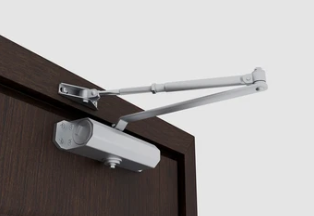

- Top Jamb Installation: In this method, the closer is installed on the upper door frame, which works well for doors with tall frames or wide doorways. Top jamb installation saves door surface space and ensures smooth closing, provided the frame is sturdy enough to support the closer.
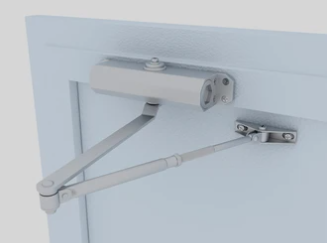
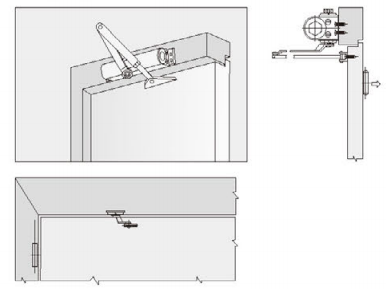
- Parallel Arm Installation: The closer arm is installed parallel to the door, minimizing the closer’s visibility. This installation is suitable for settings where appearance is important, such as offices or upscale interiors, as it keeps the closer discreet while maintaining functionality.
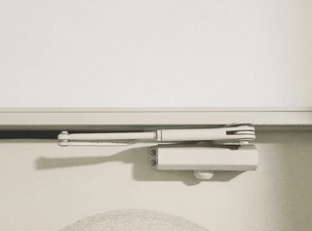
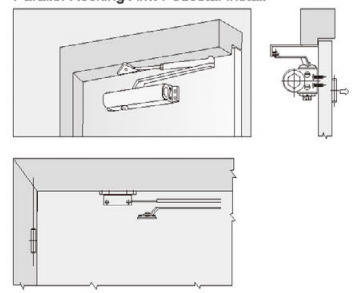
- Slide Track Installation: Using a sliding track instead of a traditional arm, this installation allows for smoother, quieter closing. Slide track closers are commonly found in environments that prioritize noise reduction, such as hospitals, libraries, and conference rooms.
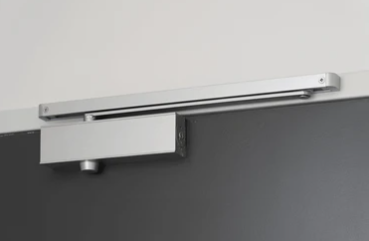

Conclusion
Choosing the right door closer requires careful consideration of factors such as the door’s weight, usage frequency, grade requirements, and installation options. With the right model and features in place, a door closer can significantly enhance door performance, safety, and durability, providing long-lasting and efficient door control in any setting.
Share This Story, Choose Your Platform!

